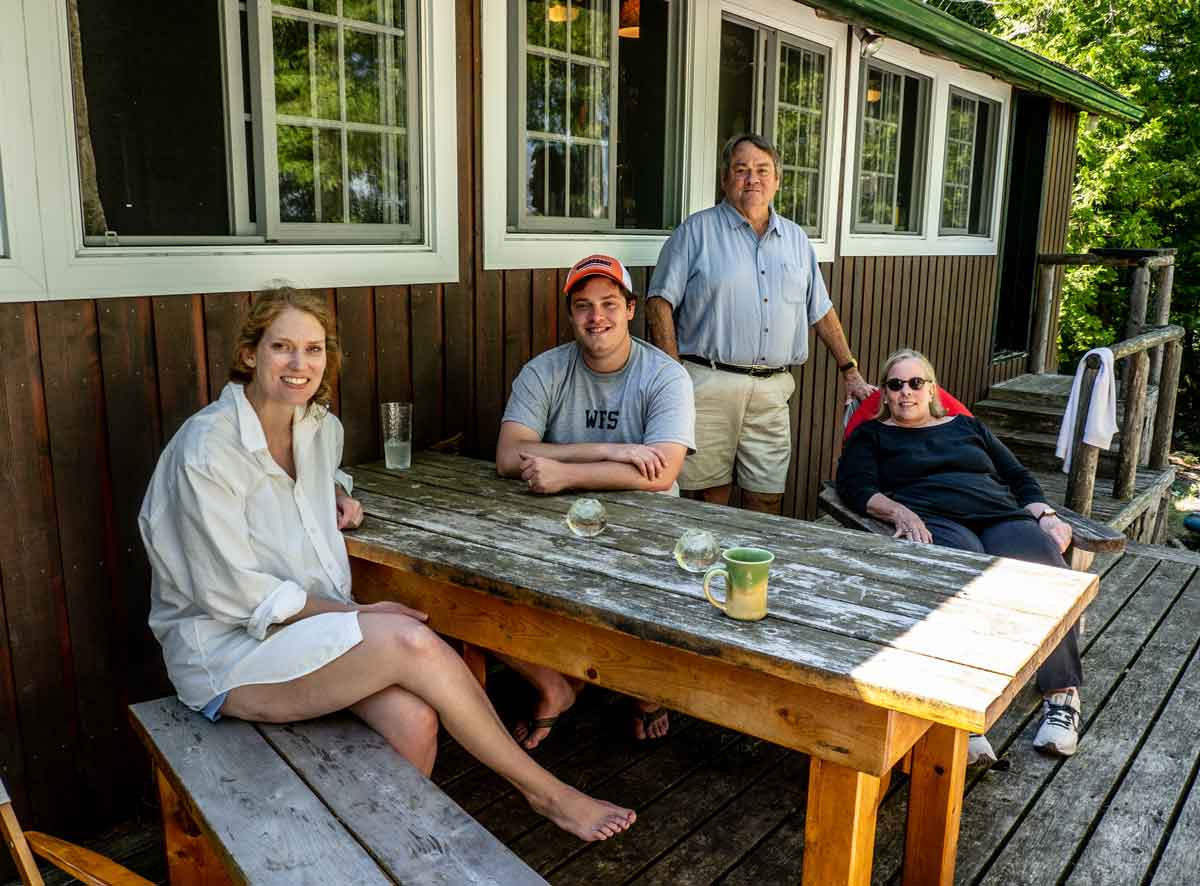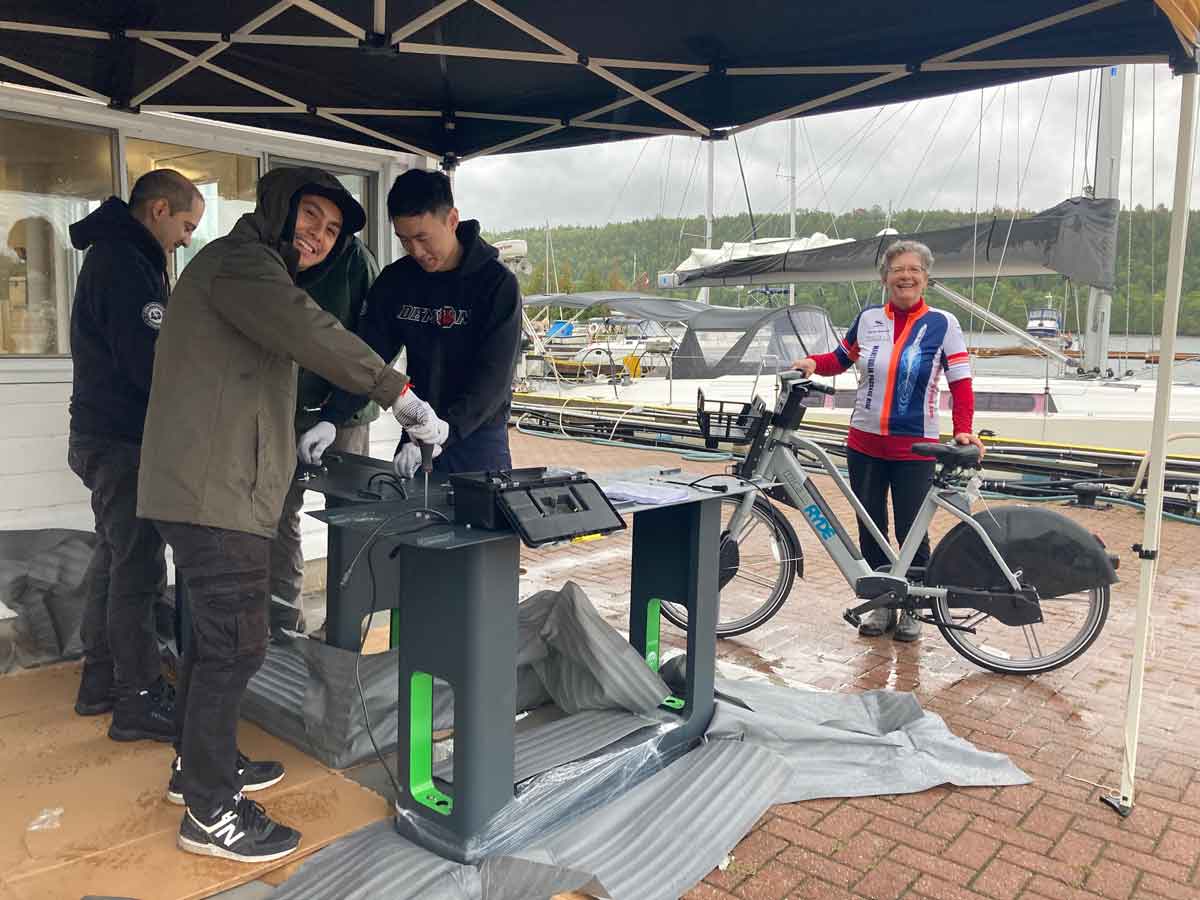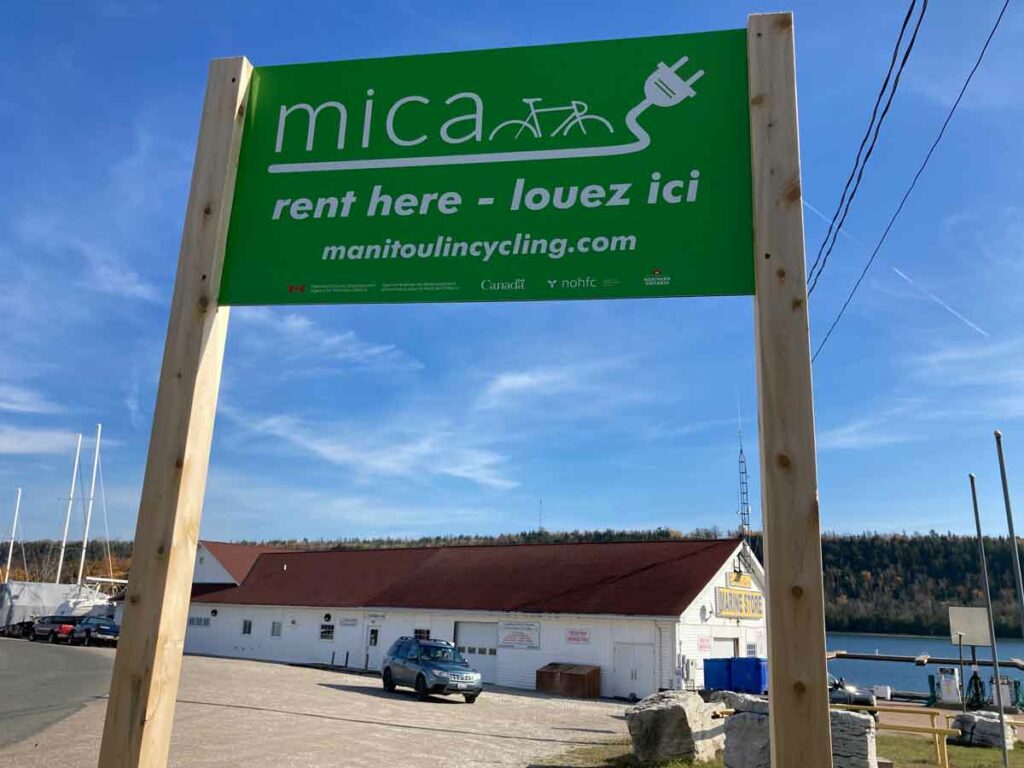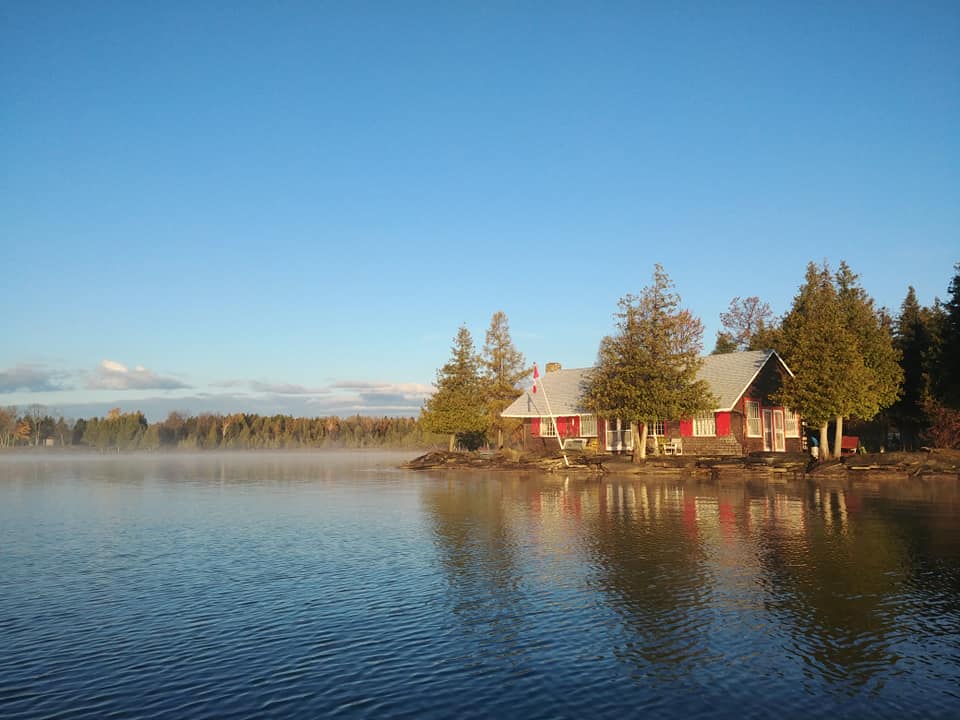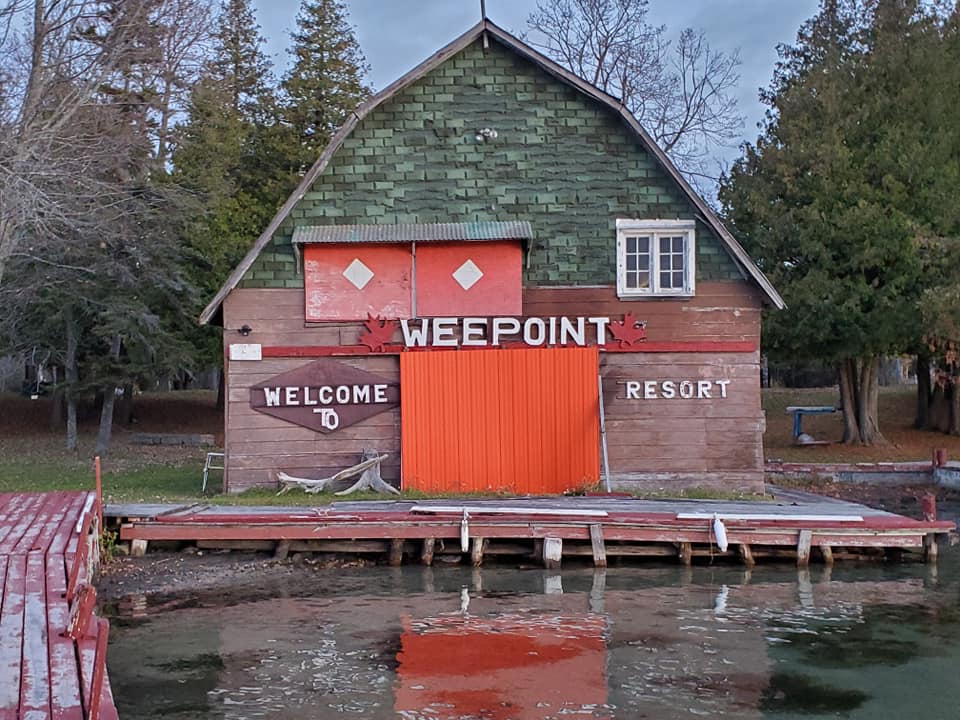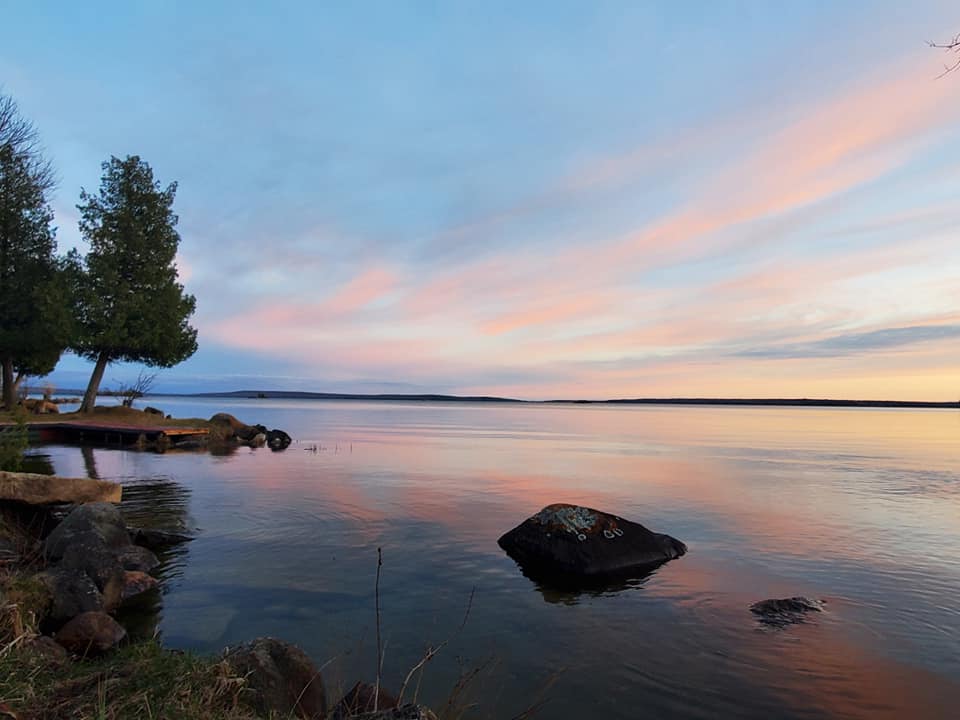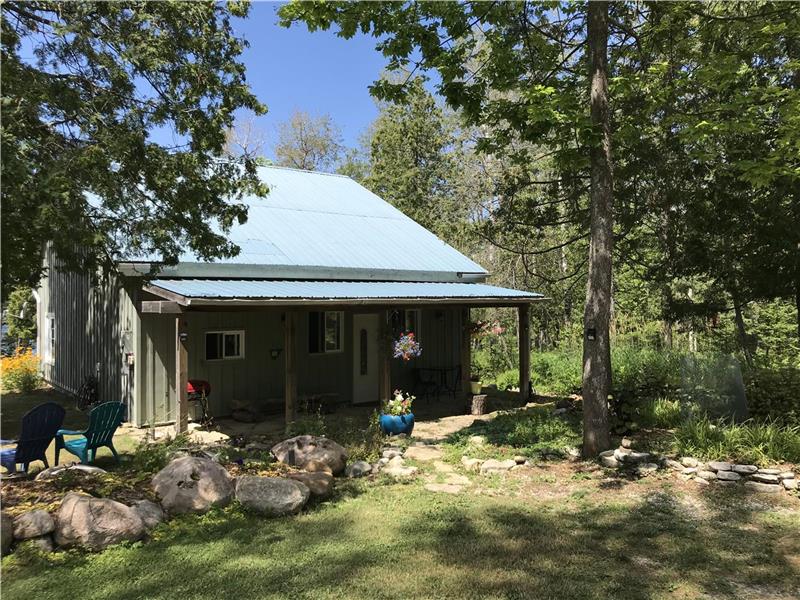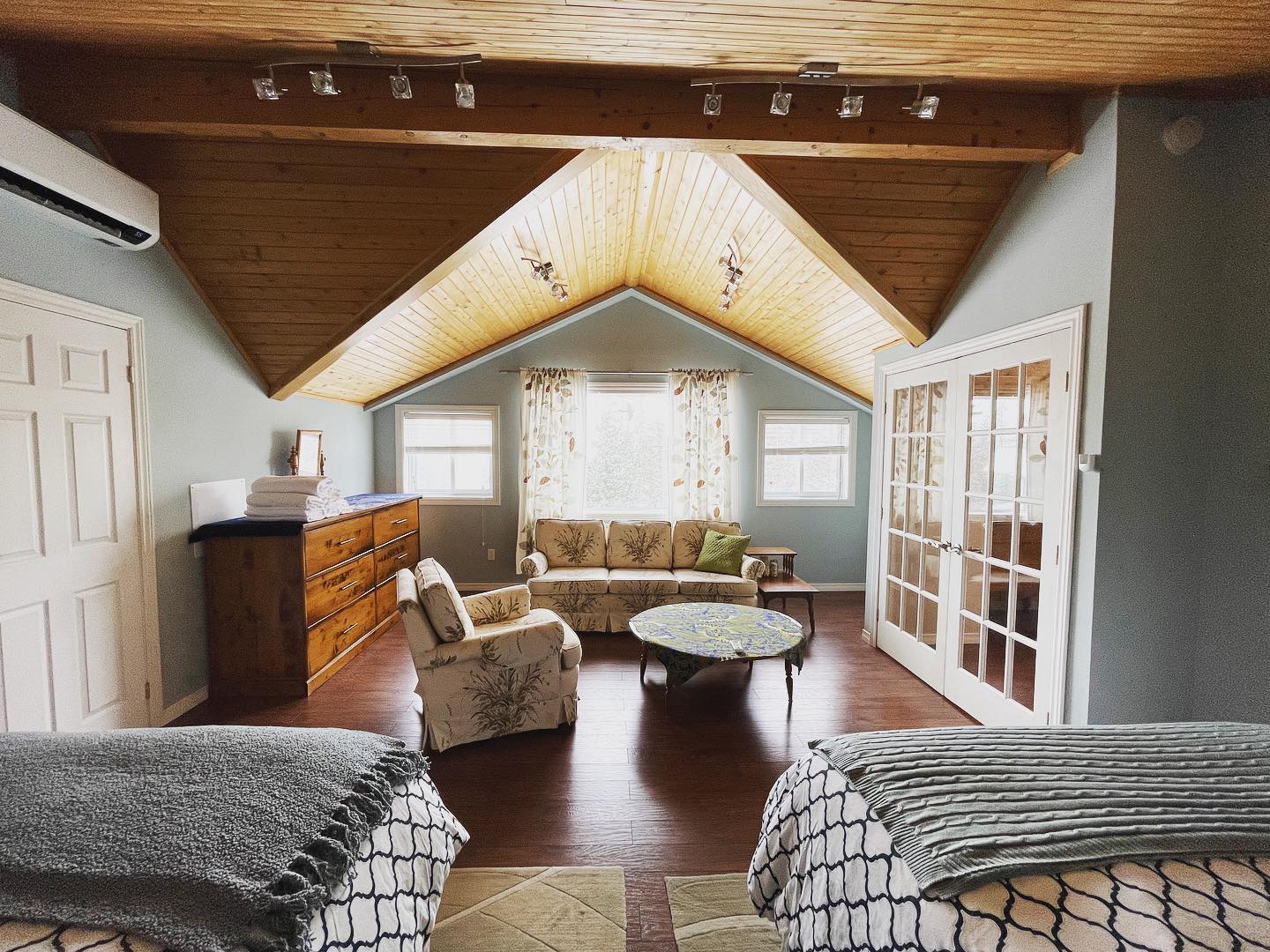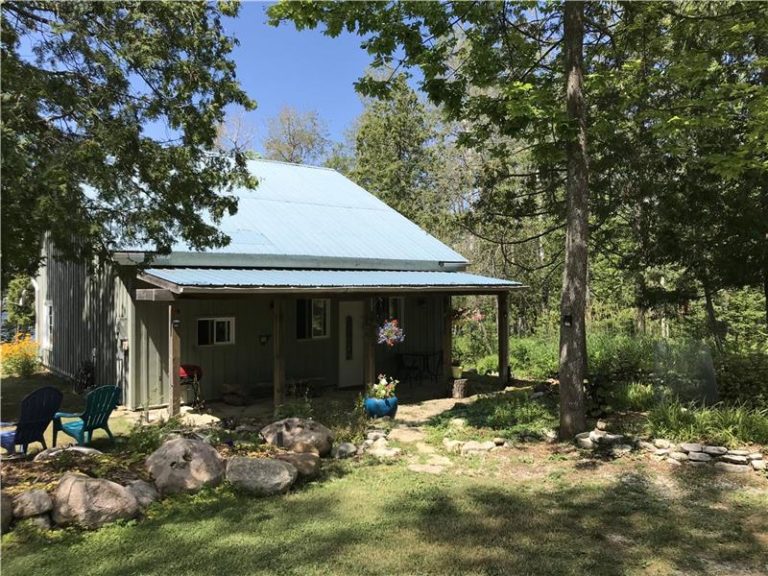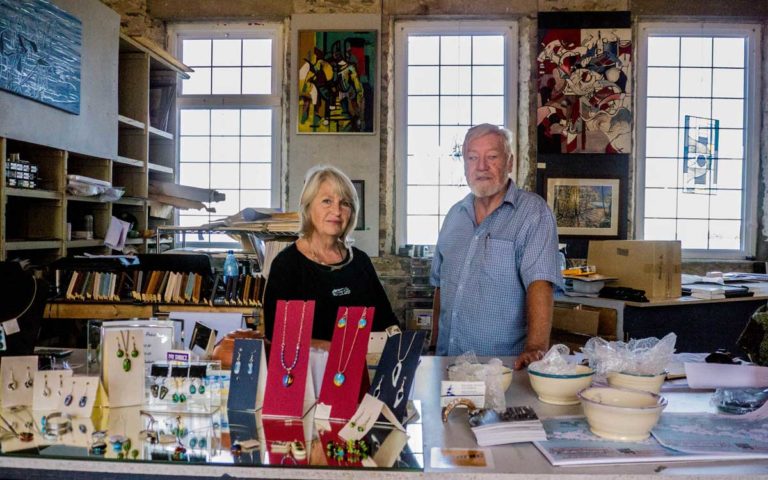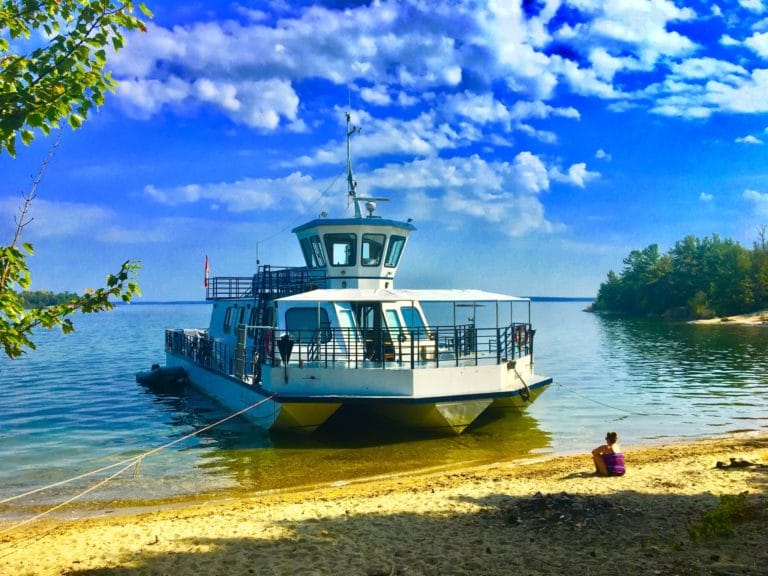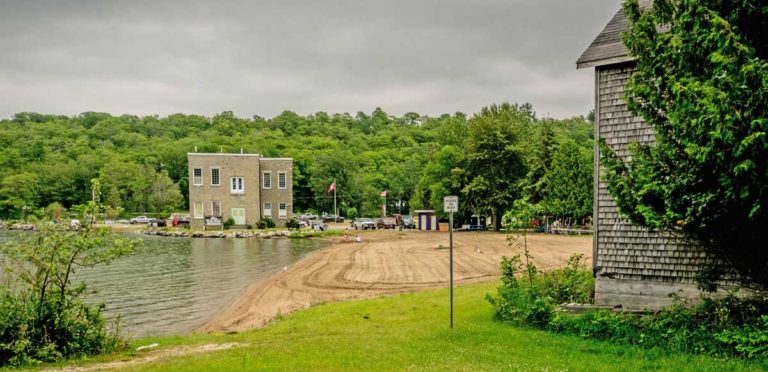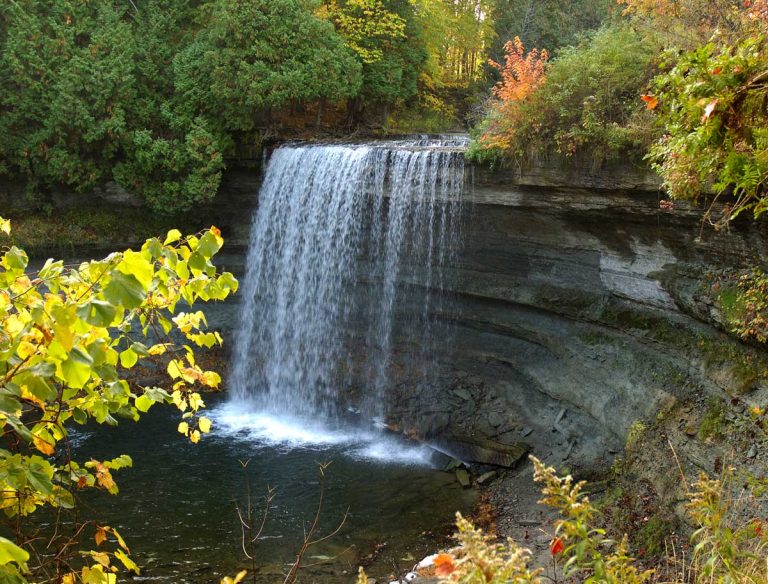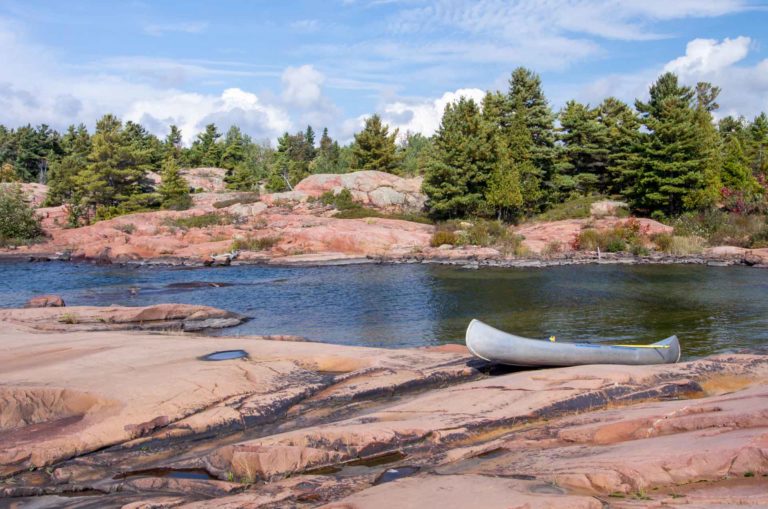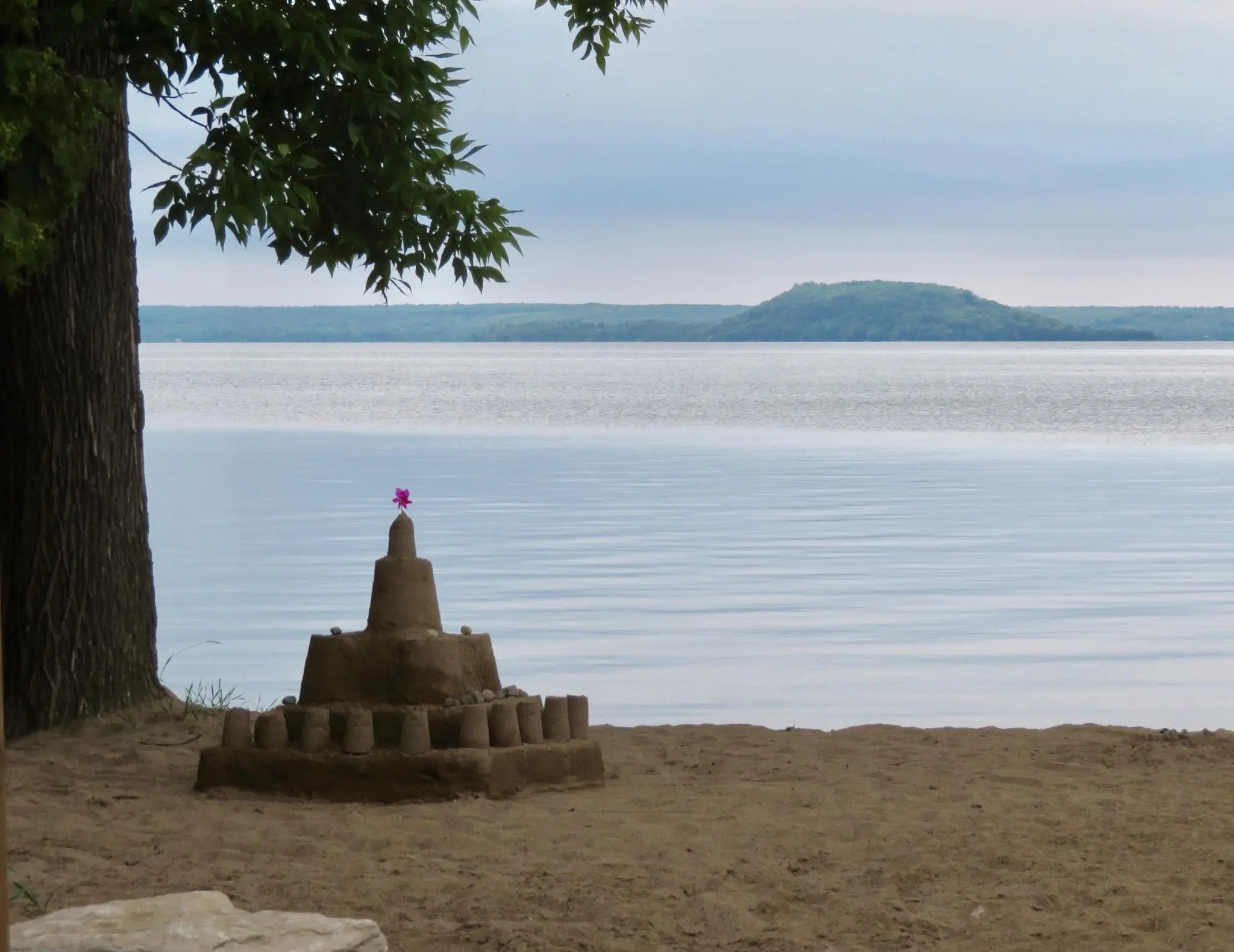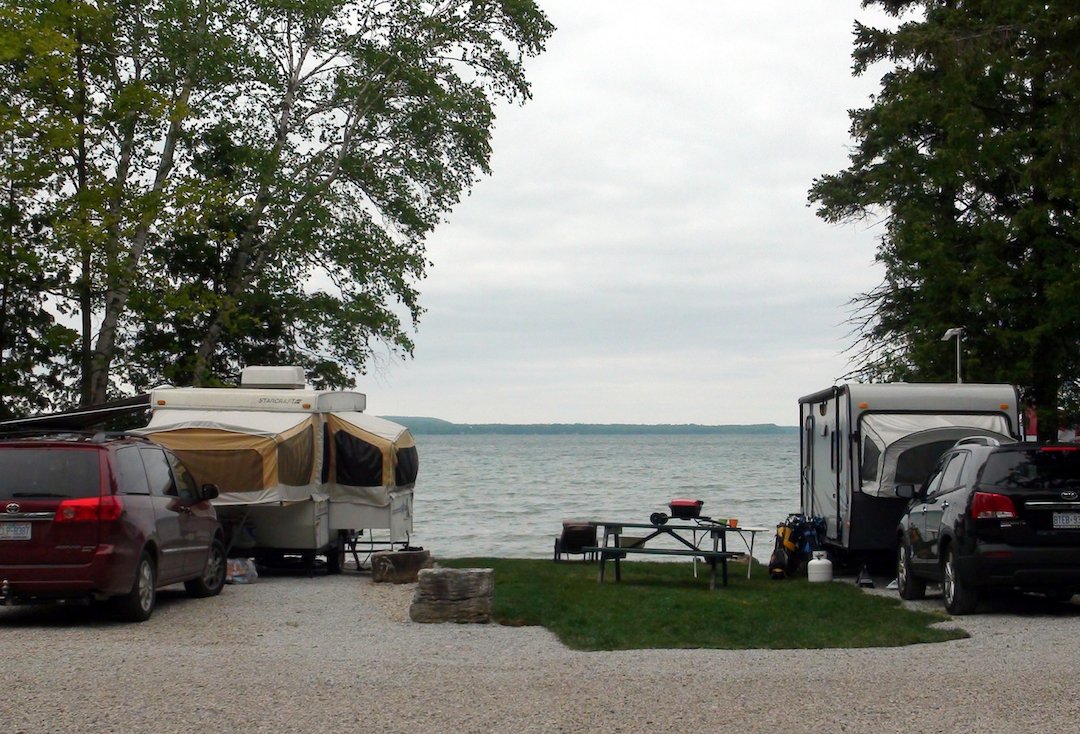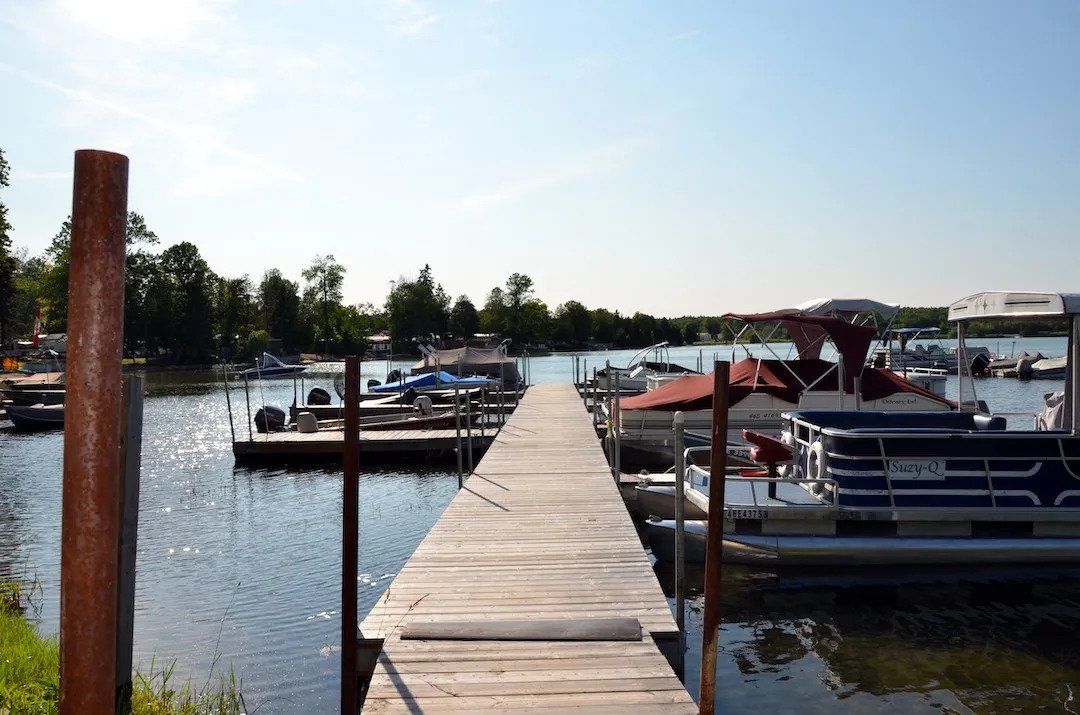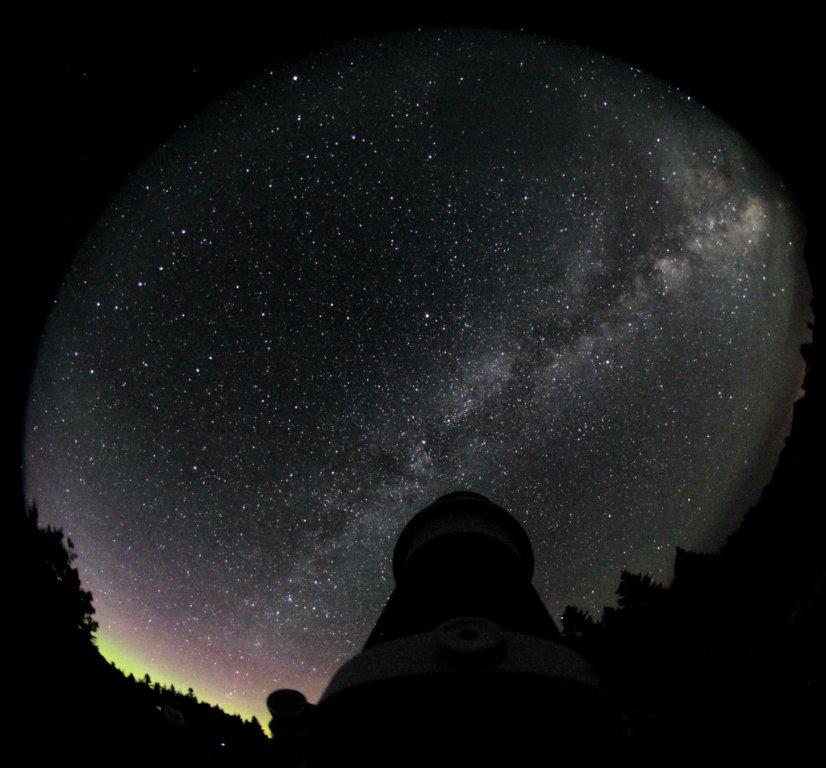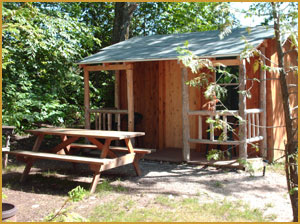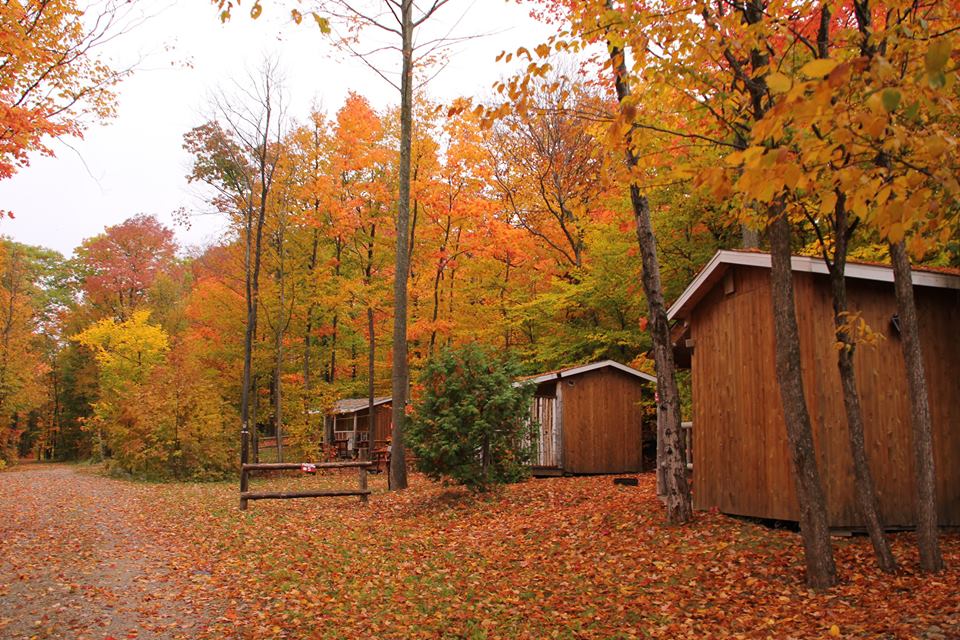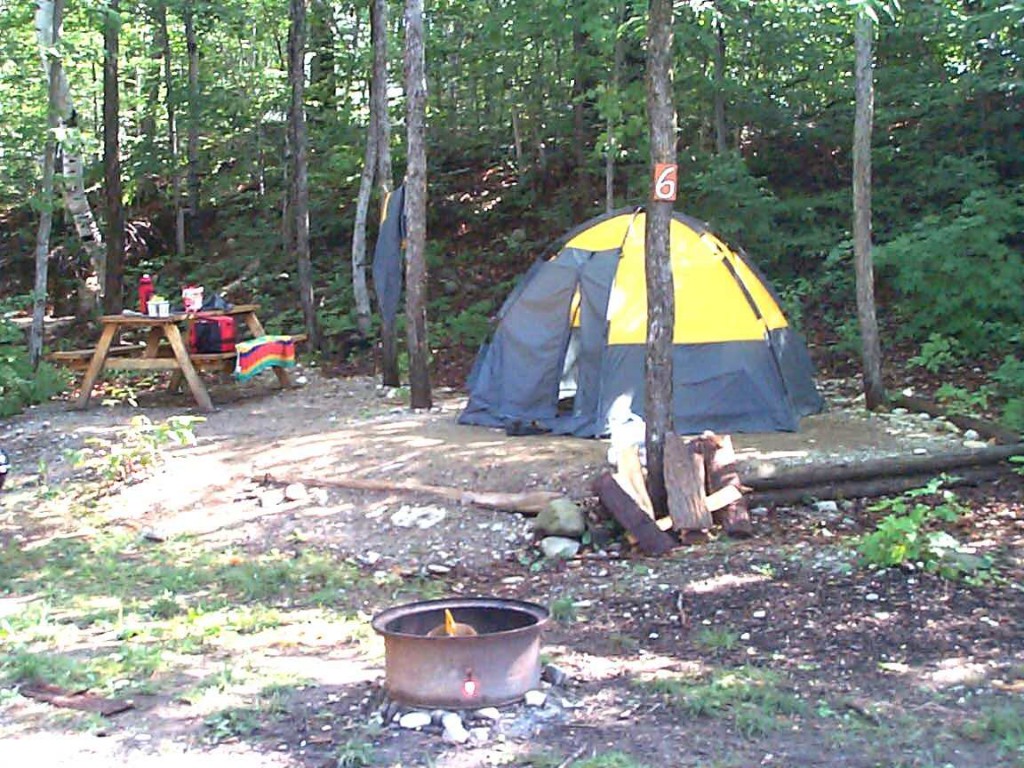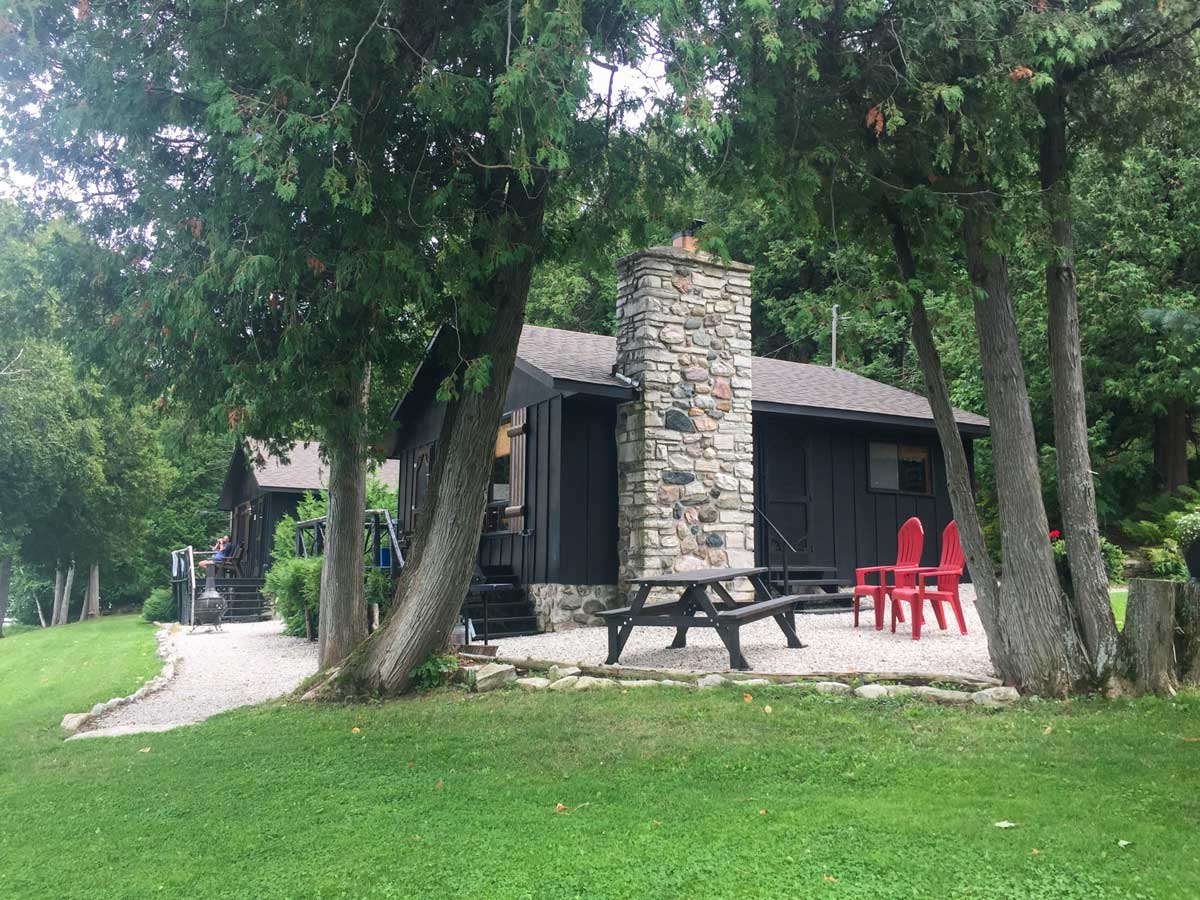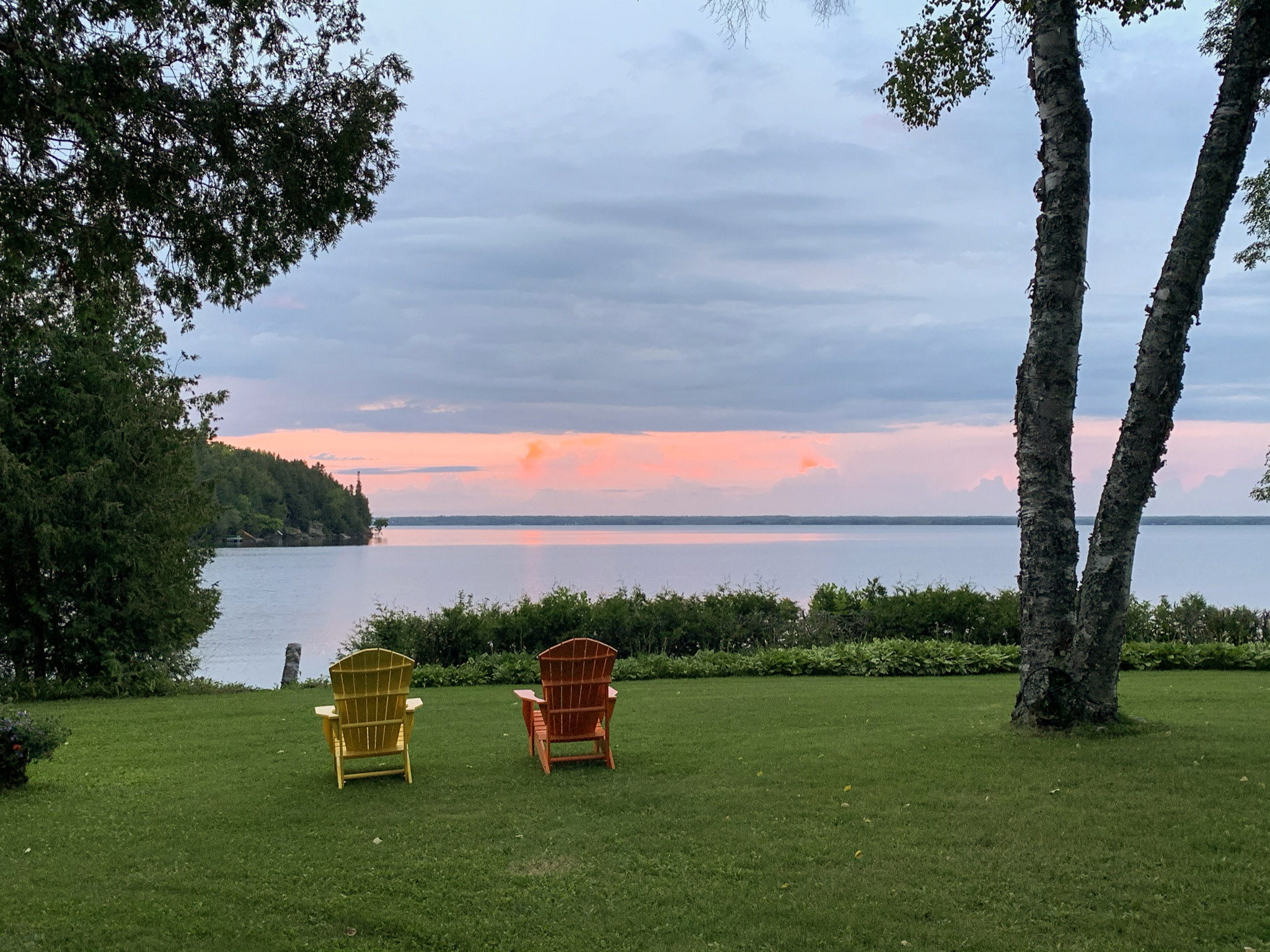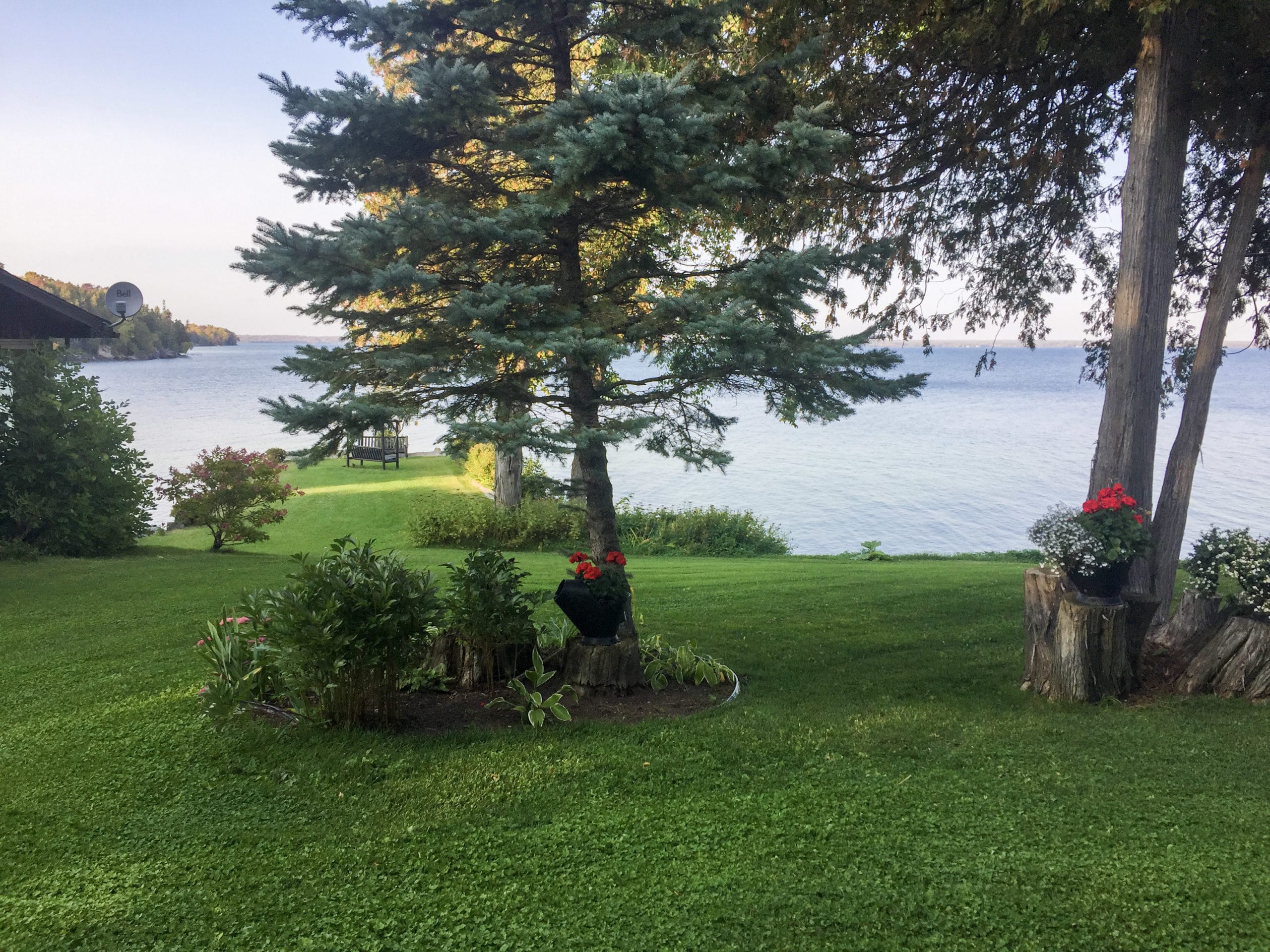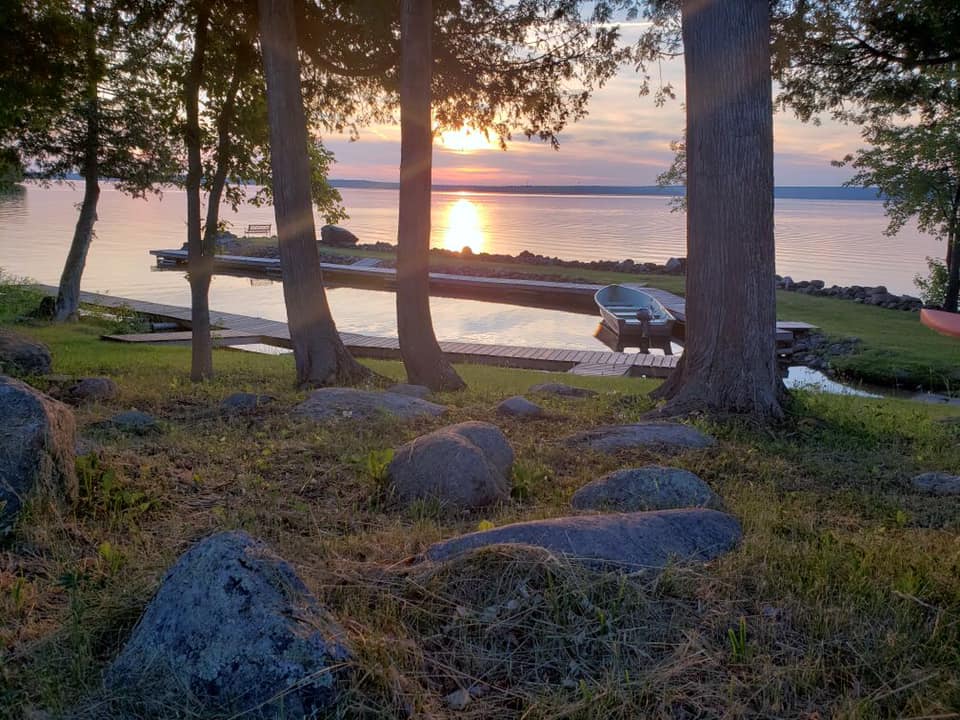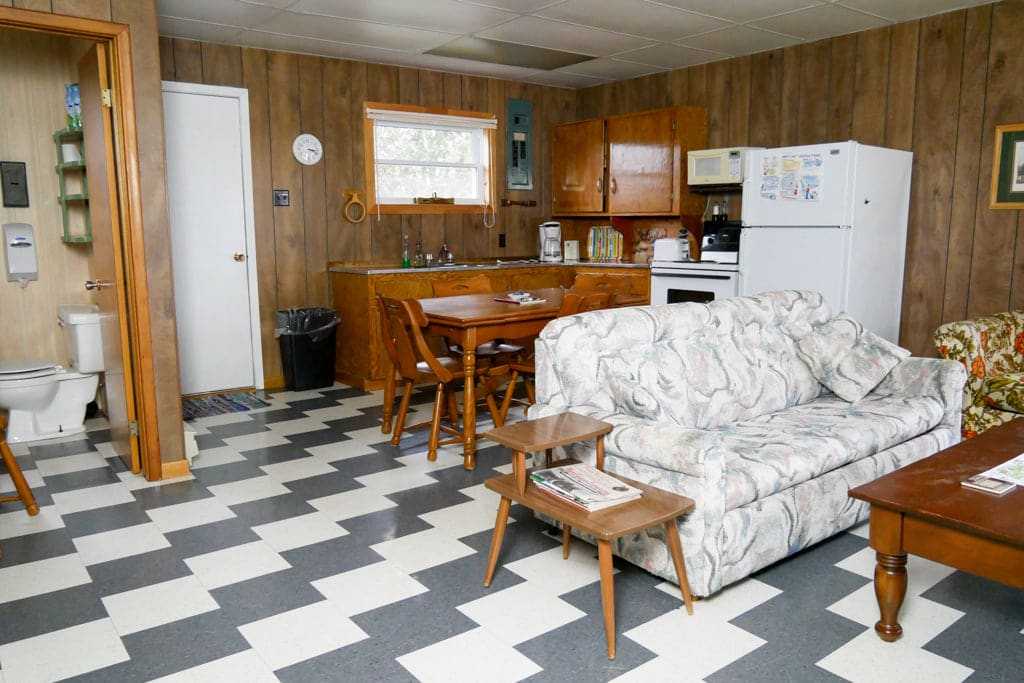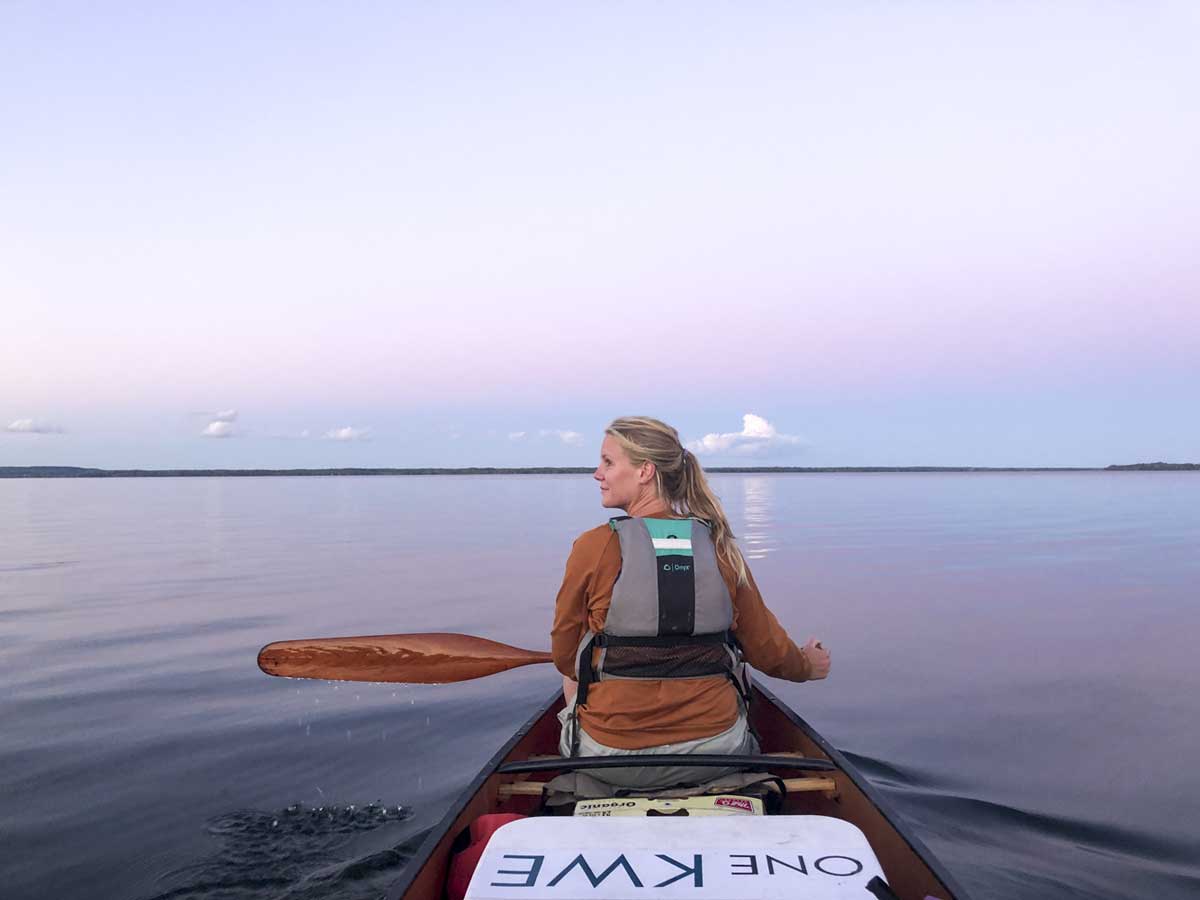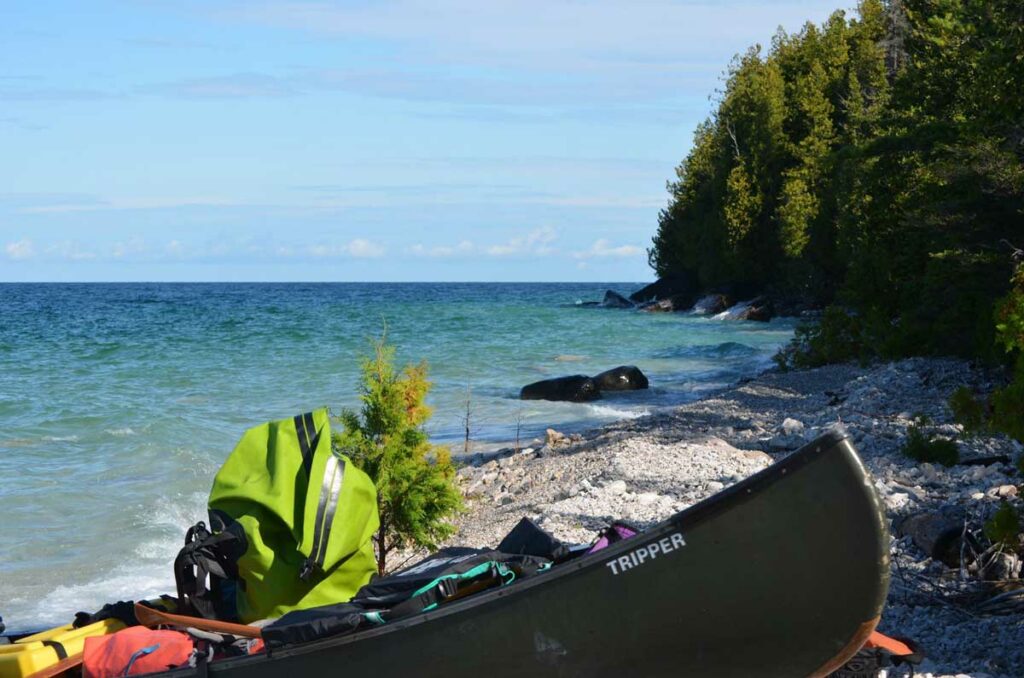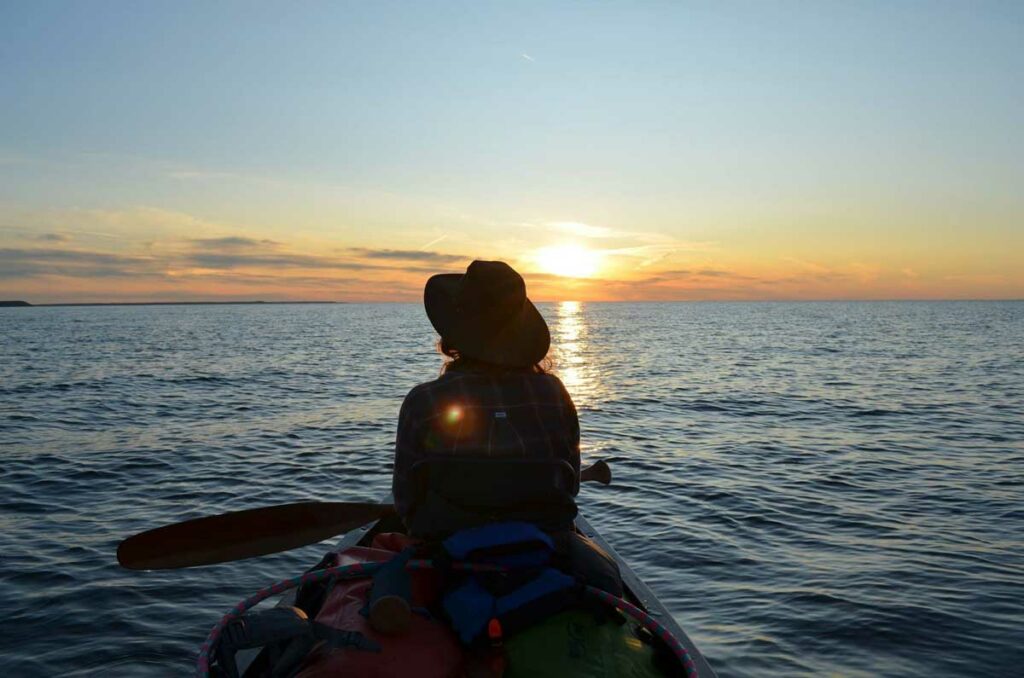by Isobel Harry
Last August, an unusual ad appeared in the Manitoulin Expositor – headed by a vintage photograph of two adults and a child standing on the edge of a lake holding a long stringer of fish, the words below begged for further investigation.
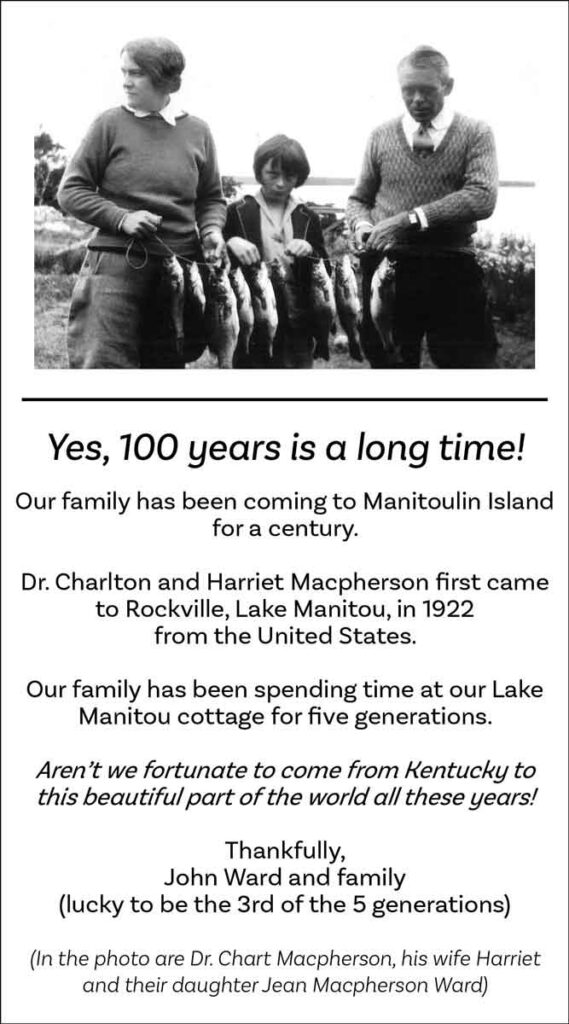
“Our family has been coming to Manitoulin Island for a century,” they said. “Our family has been spending time at our Lake Manitou cottage for five generations…. Aren’t we fortunate to come from Kentucky to this beautiful part of the world all these years!”
Signed, “Thankfully, John Ward and family (lucky to be the 3rd of the 5 generations),” the words further described the people in the photo as “Dr. Chart Macpherson, his wife Harriet and their daughter Jean Macpherson Ward.”
Well, that’s all it took to get the newspaper to assign this intrepid reporter to the case, to send her speeding toward the Rockville Road, searching for the (almost) unmarked turnoff to Lake Manitou’s edge and the (sort of) secret cottage by the previously unknown (to her) pretty little inlet in the Island’s largest inland lake. (It is also the largest lake on a freshwater Island in the world, according to the Guiness folks.)
There, tucked into a cedar grove on a small elevation overlooking a few boats moored in a charming old-time landing is the Ward family cottage. And here is the patriarch, John Ward 1V, greeting this writer warmly at the open front door with Phyllis, the spirited matriarch of this American family.
Radiating hospitality, the couple makes sure the visitor is comfortably ensconced as they tell the story of the family’s happy landings on these shores in the 1920s.
John Ward’s great grandfather, Dr. Charlton (‘Chart’) Archibald Macpherson, was born on the island of St Thomas in the US Virgin Islands, and attended medical school in Toronto. His medical residency was at Harper General Hospital in Detroit and afterwards he and his wife Harriet decided to remain in the US, settling in St Clair, Michigan where he became the town’s surgeon.
One summer, sailing up the St Clair River into Lake Michigan and then into Lake Huron, the Macphersons’ vessel ran aground at Little Current on Manitoulin Island; while their boat was being repaired, the Macphersons stayed at a family-owned resort on Lake Manitou.
“In the 1920s, the Spry family farmed on the Rockville Road and ran a tourist lodge on Lake Manitou,” explains John Ward. “They had cows and chickens and some rental cottages for tourists. My grandparents stayed in one of the cottages and ate their meals in the main lodge; they returned every year after that first visit to relax and do some fishing. They just loved it here. So much so that when the Sprys sold their place and the new owners, the Chisholms, sold off some of the land, my grandfather bought a piece and built this cottage, with a porch, two bedrooms and an outhouse, By then, in 1946, he was spending a lot of time here and had taken up painting.”
Today, we are sitting in the vertical log cabin that Chart Macpherson built, By today’s sprawling standards, it is tiny but retains all the charm of those bygone days – when cottaging meant camping out and the amenities we now take for granted, like electric lights and indoor toilets, were unheard of – although it has since been updated to include modern facilities.
The dimly lit interiors lined with dark wood logs, the small windows, the built-in cupboards, breakfast table and benches, keep everything compact and focused on the expansive view outside the screened-in porch windows, including a patio and a rustic stairway down to the dock and the lake. You get the feeling that everything that is most essential about cottage life is here; all the simple pleasures that matter most, just like in the old days: the huge inland lake, fishing, swimming, card and board games, good summer friends, endless dog-days, unearthly peace and quiet and starry, starry nights.
Charlton and Harriet’s daughter, Jean, the young girl in that vintage photo who’s helping her parents hold the stringer of a dozen fat fish, is John Ward IV’s mother. She married Jack Ward III after the second World War and while they moved to Kentucky, the pull of Lake Manitou memories kept her coming back with her husband every summer, eventually with their baby son, John Ward IV.
“As a child I slept here in my grandparents’ cottage while my parents rented a cottage next door,” says John.
“We come to recharge,” adds Phyllis. “Kentucky is far too hot in summer. We drive ten hours to get to the ferry; we used to just get in the car and drive until we got to the cabin. Now we stop for the night in Sarnia.”
John Ward IV is the third generation of his family to spend summers at the Lake Manitou hideaway, and he and Phyllis are enjoying a visit by daughter Elizabeth, son-in-law Charles – who proposed here in 2016 – and their beautiful baby, Jane, “who just loves the water!” This young family, making up the fourth and fifth generations to summer in this cabin, drive eleven hours from Richmond, Virginia to enjoy the lake, an annual climb up the Cup and Saucer and “the stunning natural beauty of the diverse landscapes” of the Island.
Charlton and Harriet Macpherson first experienced Rockville and Lake Manitou in the 1920s, just as the automobile expanded the boundaries of travel and tourism into the Island’s first farm settlements of the 1860s and 70s. Their sense of having found somewhere special has been passed down through succeeding generations that continue to treasure their ancestors’ serendipitous discovery so long ago.
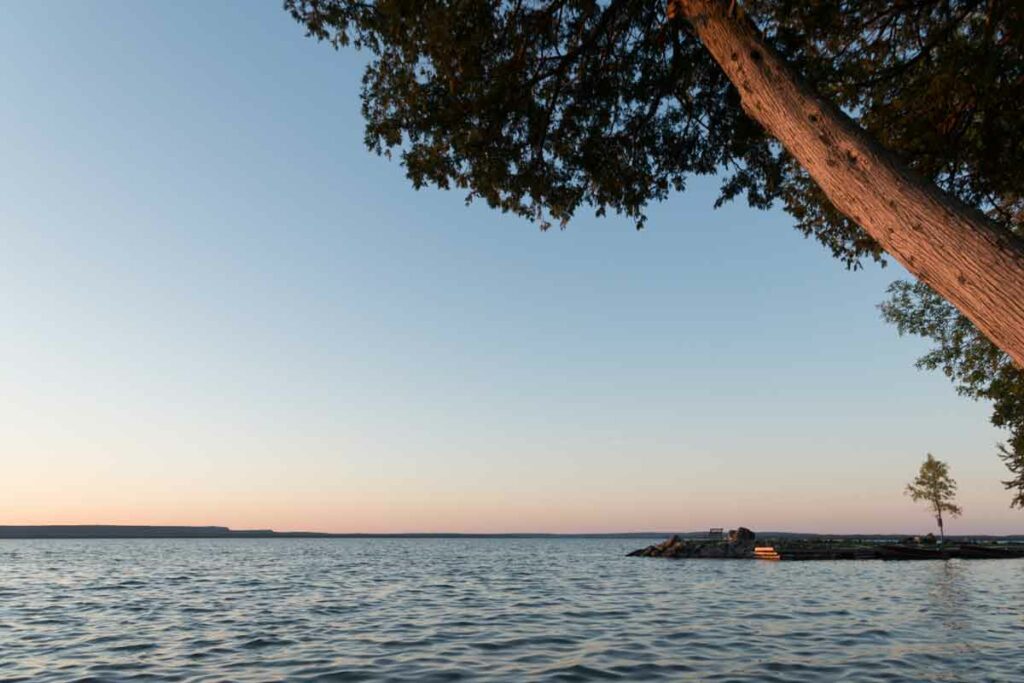
As the Ward family settles onto the patio on this hot afternoon, with the lake shimmering down below, John Ward IV, still disbelieving his good luck in finding himself here after all these years and perhaps wanting to acknowledge an intangible debt owed his forbears, sums up his deep affection for this long-loved sanctuary: “We are incredibly fortunate that our family had the foresight to build here seventy-five years ago; we are still so grateful to them.”

